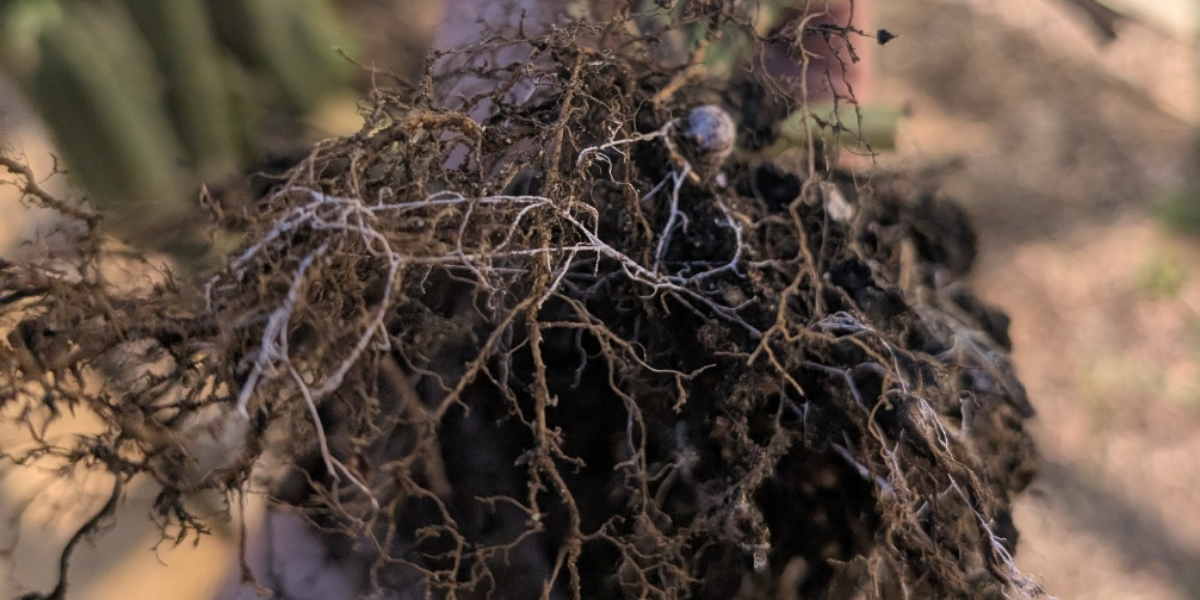Quick-Fire Facts
|
What are they? |
Beneficial soil fungi that fuse with plant roots to trade water & nutrients for sugars |
|
Compatible plants |
~ 95 % of ornamentals, veggies & fruit trees (exceptions below) |
|
Top benefits |
Up to 4× nutrient uptake, 30 % better drought tolerance & sturdier growth |
|
Best time to inoculate |
At planting, transplanting or during early active growth |
|
Simple solution |
1 tsp of Mycorrhizal Inoculant per seedling or 5 g / m² in-ground |
Why Aussie Soils Cry Out for Mycorrhizae
Australia’s ancient, leached soils are famously low in phosphorus and micronutrients. Mycorrhizal fungi extend a plant’s root system by up to 200 ×, mining locked-up P, zinc and copper that roots alone can’t reach. The result? Lusher growth with fewer fertiliser inputs—critical when you’re gardening under water restrictions.
How the Symbiosis Works
Think of the fungus as a living delivery network: ultra-fine filaments (hyphae) wrap or enter root cells, forming arbuscules and vesicles that trade soil goodies for plant-made sugars. The plant gains water and minerals; the fungus scores carbs—nature’s perfect swap-meet.
Fun stat: Our Mycorrhizal Inoculant contains ≥ 240,000 propagules / g across four powerhouse species—enough to colonise roots in days, not weeks. These fungi produce a glycoprotein called glomalin, which acts as a binding agent, improving soil structure and increasing its ability to retain water and nutrients. Want to learn more about glomalin? Click here to start Understanding Glomalin: The Secret to Soil Health and Plant Growth
Types You’ll Meet in the Garden
|
Mycorrhiza Class |
Key Aussie Hosts |
Notes |
|
Arbuscular (AM/Endo) |
Tomatoes, capsicums, citrus, roses, turf |
Works inside roots; 90 % of species |
|
Ectomycorrhizae |
Eucalypts, pines, oaks |
Forms mantles around roots; vital for native forestry |
|
Ericoid & Orchid |
Azaleas, blueberries, native orchids |
Niche specialists—often need custom inoculants |
Skip inoculation for: brassicas (broccoli, kale), spinach, beets and proteas—they either ignore or reject fungal partners.
Five Proven Benefits for Your Patch
-
Nutrient Mining – Up to 50 % more phosphorus & micronutrient uptake.
-
Water Efficiency – Mycorrhizal roots explore tiny soil pores, trimming irrigation needs by ~30 %.
-
Disease Shield – Competitive fungal barrier deters root pathogens like Pythium.
-
Soil Structure – Hyphae glue soil particles into stable aggregates, boosting aeration.
-
Yield Lift – Trials show average 15–30 % increases in fruit, flower and veg production.
Timing It Right in Australia’s Climate Zones
|
Zone |
Prime Windows |
Pro Tip |
|
Tropical & Sub-tropical |
Early dry season & early wet |
Rinse salts first if soil EC > 2.0 mS cm-¹ |
|
Temperate |
Late winter–spring & early autumn |
Pair with organic compost for slow-release carbon |
|
Cool / Alpine |
Spring thaw & late summer |
Warm inoculant to room temp before use |
Step-by-Step Application
Seedlings & Transplants
-
Dust roots or planting hole with Root Roids Shake to make direct contact.
-
Back-fill soil, water in. Colonisation starts within 48 h.
Established Pots & Beds
-
Use Root Roids Original Blend—its talc-fine powder clings to damp soil particles.
-
Water deeply to pull spores to the rhizosphere.
Lawn Top-dress
-
Mix Root Roids Granular at 5 g/m² with sand & spread.
-
Lightly irrigate.
Which Dr Greenthumbs Product Suits You?
|
Goal |
Best Pick |
Why |
|
General veggie & flower beds |
Four-species blend, budget-friendly starter |
|
|
Shock-free transplanting |
Ultrafine dust coats bare roots instantly |
|
|
Heavy-feeding fruit trees |
Extra humic acids boost nutrient chelation |
|
|
Hydro or coco grows |
Great White (premium) |
High spore count plus beneficial bacteria |
Browse the full range ➜ Dr Greenthumbs Mycorrhizae Collection
FAQs
Q. Do native Australian plants need inoculation?
Many eucalypts and wattles already harbour ectomycorrhizae in bush soils, but containerised or urban plantings still benefit from a top-up.
Q. Can I overdose?
No—excess spores simply remain dormant until roots grow.
Will synthetic fertilisers kill the fungi?
High-P starter fertilisers (> 100 mg kg-¹ P) can delay colonisation. Use half-rates or switch to an organic base like TurboDirt for best results.
Q. How long do they live?
Once established, colonies persist for the life of the plant—just avoid deep root disturbance.
Ready to Grow?
Add a packet of Mycorrhizal Inoculant or Root Roids to your next order and watch roots explode with life. Your plants (and the planet) will thank you.
Happy growing! 🌿
About the Author





